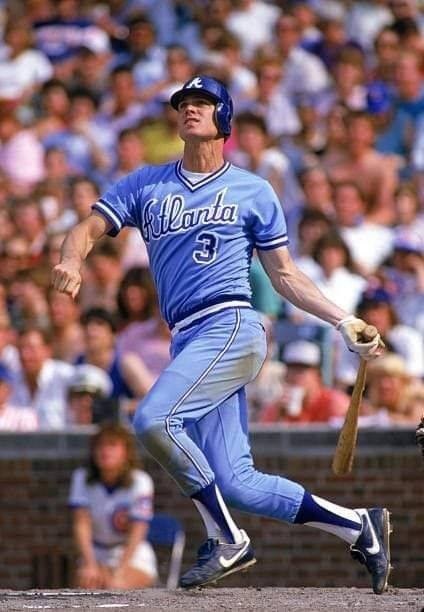Posted on
May 21, 2021 by
Mark Geddes
Memorabilia has become a
cornerstone of modern sports. It takes but a minute of entering a stadium to be
inundated with concession stands and vendors hawking the latest merchandise.
Fans collect, display, and sell these in an ever-growing marketplace. But things
were not always this way.
Sports collectibles were
an afterthought in the past. These throwaway items were given out in a box of
cereal or a pack of cigarettes. As people discarded these items that ended up
stored in attics with other junk, their scarcity created higher prices. Below
are some of the rarest and most sought-after collectibles in sports.
Honus Wagner Baseball Card
Ask any baseball card
collector what the industry’s crown jewel is, and they’ll immediately zero in
on the infamous T206 Honus Wagner. This card was produced by the American
Tobacco Company back in 1909 and had a limited release. A recent sale of this
card in 2016 went for over $3 million.
What makes this card so
unique is its rarity. While the company produced thousands of cards, very few
Honus Wagner ones went into circulation due to a rumored financial dispute.
Even fewer are in existence today.
For fans of the card,
Topps did reissue it in 2002 and 2020. But don’t expect to fetch the same
price.
Read the rest of this entry →
Tags: Baseball CardsBaseball CollectiblesHonus Wagner
Category
Baseball, Collectibles
Posted on
September 13, 2020 by
Muhammad Saood
Now, who
doesn’t know Barry bonds? He’s one of the most celebrated and cherished
baseball players in the world. And like him, Barry Bonds rookie card are widely popular too. His cards
are a worthy addition to any baseball lover’s card collection. Regardless of
all the scandals linked to him, his rookie cards remain very popular amongst
the fans especially those cards that were printed in a limited quantity.
Therefore, in this article, we have compiled the most valued and cherished
Barry bonds rookie and autographed card.
5. 1987 Fleer Baseball’s Hottest
Stars Barry Bonds no. 5: One of the most unpopular bonds rookie card
was founded by a pharmacy chain named Revco. It had a white, blue, and red
border all around the card. It was made in 1987 and was sold as a set in a
small box of paper, whoever bought this set also received a set of 6 stickers
along with it.
4. 1987 Fleer
Glossy Barry Bonds RC no.604: This Barry bonds rookie card was the
first premium set produced by the fleers. It was glossy material and it’s
rapidly become a fleer collection as it was printed in a very limited quantity.
The lesser the cards were printed the better the quality of the product was. It
is said that around 100,000 glossy cards were printed and sold.
Read the rest of this entry →
Tags: Barry BondsBaseball Cards
Category
Baseball, Baseball Cards
Posted on
April 28, 2019 by
Joe Juhasz
|
1970/1972/1973 Topps Candy Lids
Checklist & Values
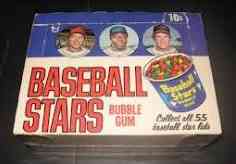
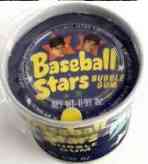
Topps has tried many crazy products, often called “test issues”.
Test issues were usually only distributed in limited areas and were difficult to find. Candy Lids were one of Topps most unusual; little tubs of candy with player’s photos on bottom of the 1 7/8″ lids. The 10 cent candy’s came 24 to a box. Sealed tubs can still be found in the $150 to $200 range. Called “Baseball Stars Bubble Gum”, the 1970 Topps Candy Lids set had 24 different players, while 1973 Topps Candy Lids had 55.


 Topps released their first Candy Lids in 1970. The 1970 Topps Candy Lids are very, very hard to find and had small photos of Tom Seaver,
Carl Yastrzemski and Frank Howard.
Topps released their first Candy Lids in 1970. The 1970 Topps Candy Lids are very, very hard to find and had small photos of Tom Seaver,
Carl Yastrzemski and Frank Howard.
In 1973 the candy was replaced by gum, the mini photo of Frank Howard was gone from the top of the lid and team logos were airburshed off the player’s caps. Even the tiny Yaz and Seaver photos logos removed. 1973 Topps Candy Lids are hard to find, but not nearly as scarce as the 1970’s. In 1972 a Topps Candy Lids issue was planned but never released although a few proofs do exist.
 Topps released two other test issue sets in 1973 (1973 Topps Pinups and 1973 Topps Comics). The 1973 Topps Comics and 1973 Topps Candy Lids shared many photos and again had no team logos. If thinking “licensing dispute”, you are likely right. Topps received player’s union’s permission for these test issues, but not Major League Baseball’s. Issues over rights & fees with MLBPA and the player’s union resulted in Topps started shutting down future production of test issues putting an end to some of their most fun collectibles. Topps released two other test issue sets in 1973 (1973 Topps Pinups and 1973 Topps Comics). The 1973 Topps Comics and 1973 Topps Candy Lids shared many photos and again had no team logos. If thinking “licensing dispute”, you are likely right. Topps received player’s union’s permission for these test issues, but not Major League Baseball’s. Issues over rights & fees with MLBPA and the player’s union resulted in Topps started shutting down future production of test issues putting an end to some of their most fun collectibles.
Click for complete
1973 Topps Candy Lids Checklist and Prices
Note: You may be on that page right now.
|
Tags: Baseball Cards
Category
Baseball, Baseball Cards, Sports Cards, Sports History
Posted on
May 02, 2017 by
Ross Uitts
It’s considered the most iconic post-War baseball card in the hobby yet it’s also commonly mistaken as his rookie card.
That’s right, the 1952 Topps #311 card is actually not Mickey Mantle’s rookie card.
That distinction would belong to the 1951 Bowman #253 card.
But even though that one is Mickey Mantle’s true rookie card, it’s actually his 1952 Topps #311 that is the more valuable of the two.
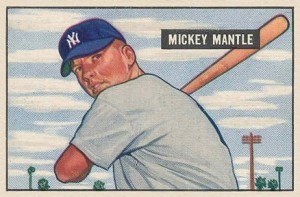
And as you might often expect, Mantle is a rare case where a player’s rookie card isn’t his most valuable.
So, why is that?
Well, the story is actually quite fascinating.
Topps has been the biggest name in sports cards since 1952 when they released their first official baseball card set.
And that’s the first of several factors that make’s Mantle’s 1952 Topps card so valuable: he was the most popular player in the industry juggernaut’s first set. This immediately sends the card’s historical value through the roof. Even common cards of this set can fetch hundreds of dollars in top condition.
The second reason for its high value is because it’s way scarcer that you might expect.
To understand how scarce it is, you’ve got to remember that Topps and other manufacturers released baseball cards in multiple series. At the beginning of the 1952 baseball season, kids were chasing cards in Series 1, tearing through the 5 cent packs in search of their heroes. But Mantle was nowhere to be found. Series 1 only included cards #1-310, and Topps had earmarked Mantle to be card #311.
Read the rest of this entry →
Tags: Baseball CardsMickey MantleNew York YankeesTopps
Category
Baseball, Sports Cards
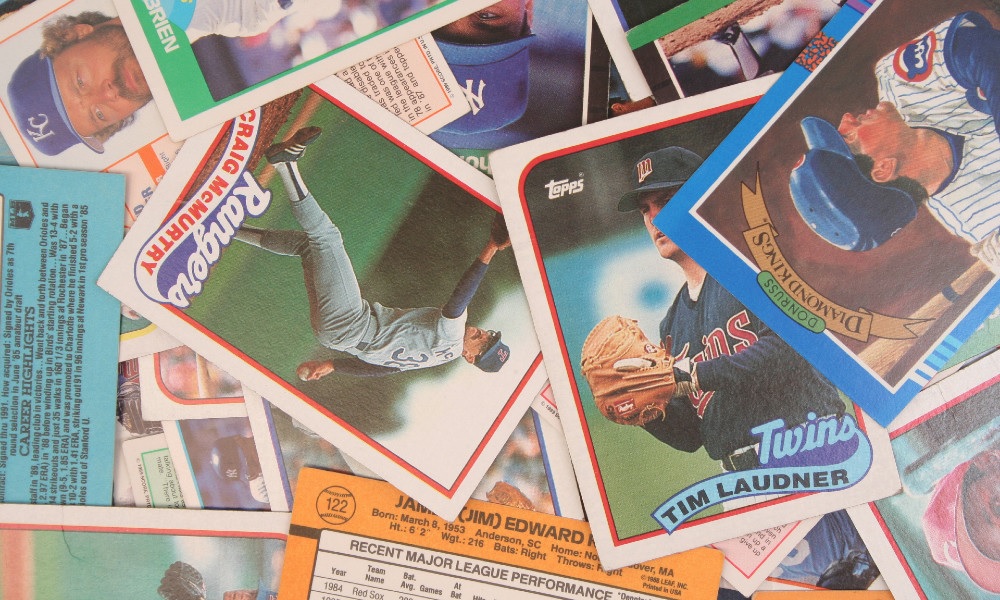
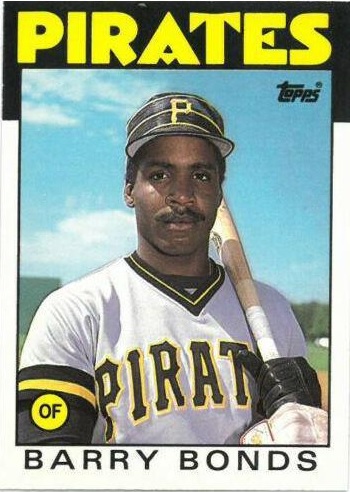

 Topps has tried many crazy products, often called “test issues”.
Test issues were usually only distributed in limited areas and were difficult to find. Candy Lids were one of Topps most unusual; little tubs of candy with player’s photos on bottom of the 1 7/8″ lids. The 10 cent candy’s came 24 to a box. Sealed tubs can still be found in the $150 to $200 range. Called “Baseball Stars Bubble Gum”, the 1970 Topps Candy Lids set had 24 different players, while 1973 Topps Candy Lids had 55.
Topps has tried many crazy products, often called “test issues”.
Test issues were usually only distributed in limited areas and were difficult to find. Candy Lids were one of Topps most unusual; little tubs of candy with player’s photos on bottom of the 1 7/8″ lids. The 10 cent candy’s came 24 to a box. Sealed tubs can still be found in the $150 to $200 range. Called “Baseball Stars Bubble Gum”, the 1970 Topps Candy Lids set had 24 different players, while 1973 Topps Candy Lids had 55. 

 Topps released their first Candy Lids in 1970. The 1970 Topps Candy Lids are very, very hard to find and had small photos of Tom Seaver,
Carl Yastrzemski and Frank Howard.
Topps released their first Candy Lids in 1970. The 1970 Topps Candy Lids are very, very hard to find and had small photos of Tom Seaver,
Carl Yastrzemski and Frank Howard.  Topps released two other test issue sets in 1973 (1973 Topps Pinups and 1973 Topps Comics). The 1973 Topps Comics and 1973 Topps Candy Lids shared many photos and again had no team logos. If thinking “licensing dispute”, you are likely right. Topps received player’s union’s permission for these test issues, but not Major League Baseball’s. Issues over rights & fees with MLBPA and the player’s union resulted in Topps started shutting down future production of test issues putting an end to some of their most fun collectibles.
Topps released two other test issue sets in 1973 (1973 Topps Pinups and 1973 Topps Comics). The 1973 Topps Comics and 1973 Topps Candy Lids shared many photos and again had no team logos. If thinking “licensing dispute”, you are likely right. Topps received player’s union’s permission for these test issues, but not Major League Baseball’s. Issues over rights & fees with MLBPA and the player’s union resulted in Topps started shutting down future production of test issues putting an end to some of their most fun collectibles. 
